
|
EATHER
FANS
|
 |
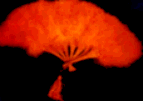 |
|
 |
|
The
fan used to be the most essential accessory in a woman's wardrobe. It
was an indication of the wearer´s social status. The folding fan
is supposed to have been invented in Japan in the 7th century. The fan
leaves were made of vellum and paper. The leaves were hand painted or
printed on and not rarely made out of feathers. The most common fan in
the fan crazy 18th century was the folding variety based on Chinese models.
Fans were handmade until the 19th century when the first fabric fans came
up. The use of fans declined with the outbreak of the first world war.
|
Marabou Feather Fan |
Today,
the fan still holds a fascination to many people. There are many fan clubs
and fan societies devoted to this craft. Even fan museums have been built
to make the world remember one of its smartest inventions. One fan museum
is located in Greenwich, London and exhibits every possible aspect of
fan making and history. You can find a collection of more than 3,000 predominantly
antique fans from all around the world dating back as far as the 11th
century in this special museum.
|
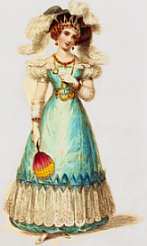 |
The fan is said to have been be a woman´s best friend. With it she could gesture encoded messages using one of the numerous "fan languages". The ladies skill to use this language can be compared to the gentlemen´s ability to use the sword. For example: to place the fan in the right hand in front of the face meant: "Follow me". The Language of Fans is decoded at this interesting page: |
|
|
Ostrich
Feather Fan, 19th Century
|
Fan
from Dragonwings
|
 |
Feather
fans have had a place in shamanic traditions for a very long time. They
were and still are used to direct the smoke of burning herbs for spells
and blessings. Other kinds of magic feather fans are used as praying and
healing tools. They are moved over the diseased body part or photo of
the sick person or animal. The fans´ main purpose in this action
is to help concentrate on the aim of the spell and to direct the raised
energy.
|
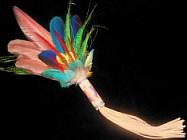 |
|
|
Medicine
Fan provided by The Sun House
|
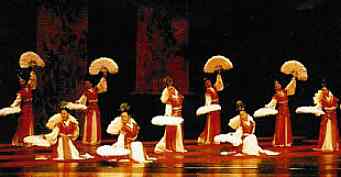 |
Fans have a long traditions as air coolers in China. Nowadays they have given way to electric fans and air-conditioners. However, in rural areas, the traditional fan is still a popular item. Fans are still used in modern Chinese opera where they are used as artistic props. The fan craftsmanship in China has a history of about 1,500 years. |
|
Chinese
Tang Dance with Feather Fans
|
 |
Some
feather fans are also used during mystic dances. In one of the Native
American dances if a feather comes loose from one the costumes, the dance
is stopped, a medicine man is called and with the dancers create an air
currant to lift the feather from the ground. The dancer who has lost the
feather has to pay the medicine man and all other dancers. In other traditions
the feather fan is used by young women to tip a man on the shoulder to
invite him to join her in a dance. Feather fans can also be found in many
other cultures as accessories in dances.
|
 |
|
Peacock
Feather Fan Market, Old Delhi
|
Mexican
Feather Fan - Vienna Ethno Museum
|
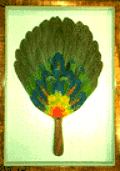 |
The
Hawaiians use feathers for many of their objects for the volcanic islands
is lacking precious metals or gemstones. Thus they came to treasure natural
materials like feathers for their beauty and rarity. This feather fan
to the right has been brought by Captain Cook in the 1700s.
|
|
Picture
provided by The Hana Coast Gallery, Fan by Beth McCormick
|
|
|
For
more information on magical feathers, please go to the "Feather
Magic" page.
|
|
Touch
the feather to get back to the top
|
|
|
|
|
|
Ostrich
Feather Fan, 19th Century bought from Corbis
|
|
Feather
Market Picture bought from Corbis
|
| Vienna Ethno Museum Pictures may be used for private use, but not distributed. Please visit their site for more information. |